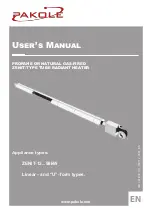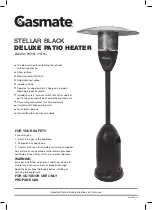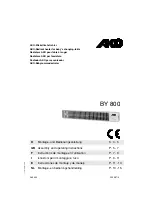
Meeting Part L
The quick start guide!
6
What changed?
All the old methods of compliance have been abolished and
replaced with a Target Carbon Emission Rate (TER).
Whatever fuel type you choose for the heating and hot water of
your new building - gas, oil, LPG or electric - you have to show
that the overall carbon emission rate is less than the target for that
building type.
There are also new minimum standards for U-values and air-
tightness, which must be tested on completion of the building.
However, even meeting all the minimum standards will not
guarantee a pass.
The biggest change is that under the new rules the whole building
is taken into consideration. Every factor that can influence carbon
emissions is relevant and it’s the whole building that must pass.
So just building to minimum standards may not guarantee a pass
because the whole building may still exceed the target
carbon emission rate.
What’s my target?
The target is set in terms of Kilograms of carbon dioxide for every
square metre of the building, over the course of a year
(KgCO2/m
2
/yr).
A range of sample buildings is used to set the target, which is
then adjusted for the size and shape of the actual design and the
heating and hot water plan.
The complex calculation of both the target and the actual score of
your new building can be performed within special SAP 2005
approved software. (The government’s adopted Standard
Assessment Procedure). An accredited SAP assessor is required
to complete this.
The targets created under Part L 2006 demand a 20% reduction
in carbon emissions compared with the previous rules. This new
tougher target was set to improve the country’s energy efficiency
and dependence on imported fuel and to reduce the devastating
effects of climate change.
The tougher target applies to all relevant buildings, all products
and all fuel types. It’s the whole building that must comply, not any
given product or building service.
Block Assessment
Part L 2006 has important rules for setting and achieving the
targets in flats and apartments. So called
‘Block Assessment’
allows for all the flats or apartments in a building to be assessed
in one go.
Each flat or apartment can be dealt with as the developer or
specifier feels appropriate for meeting the overall TER, across the
different floors and sides of the building. Any given flat or
apartment does not have to meet an individual TER as long as the
whole building does.
This allows the developer or specifier flexibility in how to achieve
the target. For example, mechanical ventilation with heat recovery
(see picture above) may be installed which would create carbon
savings which can be shared out across the whole building.
It also reduces running costs and becomes a major selling
feature. For more advice on saving energy see the guide at the
back of this brochure.
Can you comply using electric heating and hot water?
Yes.
The only test for compliance is that the building does not exceed
the target carbon emission rate. We continue to supply electric
heating and hot water solutions into fully compliant buildings.
Electric heating has also been shown to have lower lifetime costs
of ownership than gas, is easier and quicker to install,
is maintenance free, offers great design flexibility and has lower
initial capital costs.
Electric heating is the fuel of the future. Low carbon electricity
from UK sources produces low carbon heating only with
electric products.
How do I reduce the carbon emission rate of a building?
There are a number approaches that are proving most effective at
reducing the carbon emission rate of a building. We recommend
you consider the following options. In isolation or in combination,
all of these options have been used in conjunction with modern
electric heating.
Electric heating continues to grow in popularity. In April 2006 the
revision to Part L of the Building Regulations meant the way you comply
for new buildings changed. This is the quick-start guide to complying
with Part L.
“
”
Xpelair Xcell 270
+44 (0) 1733 456789 www.creda-heating.co.uk







































